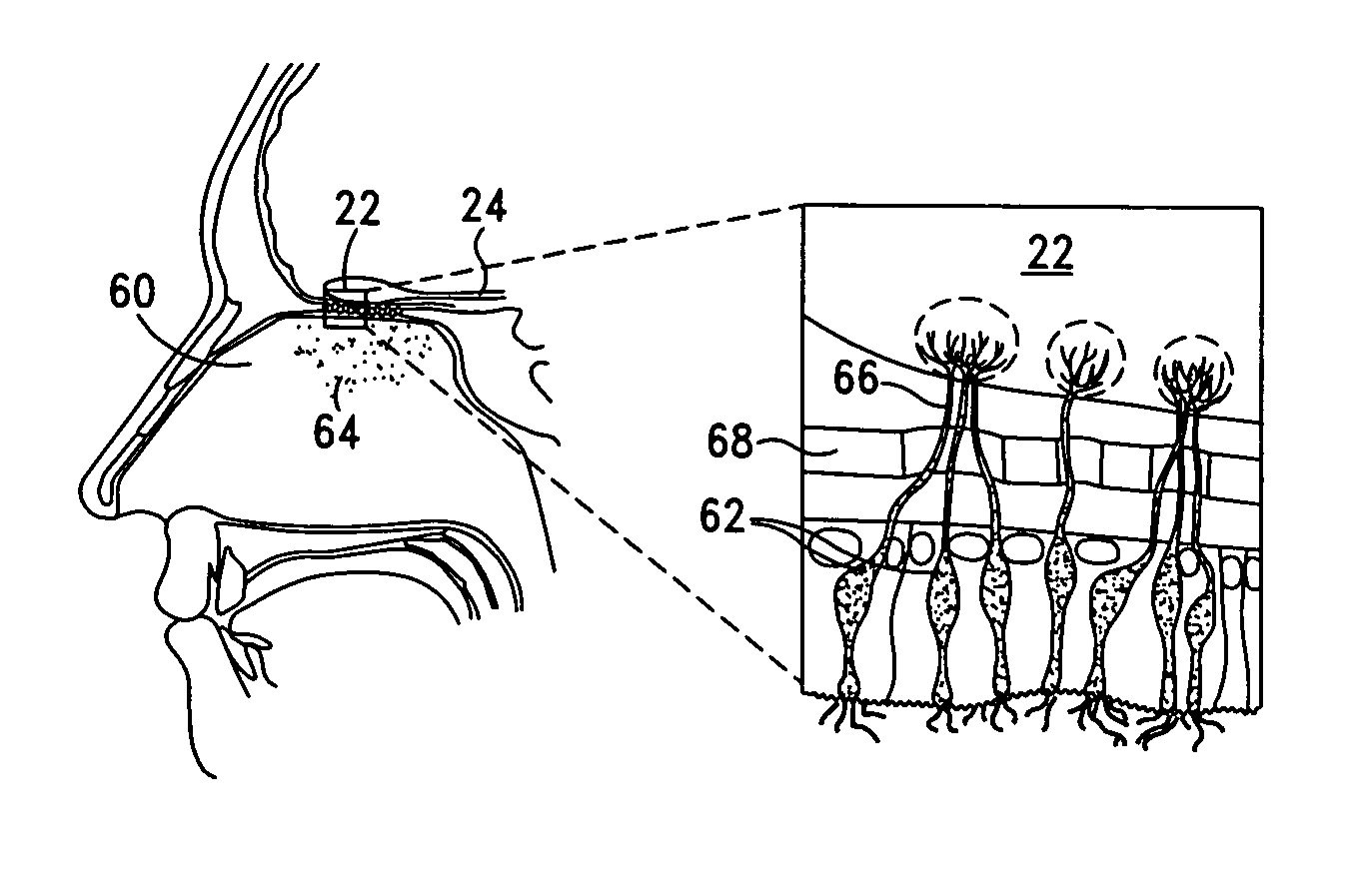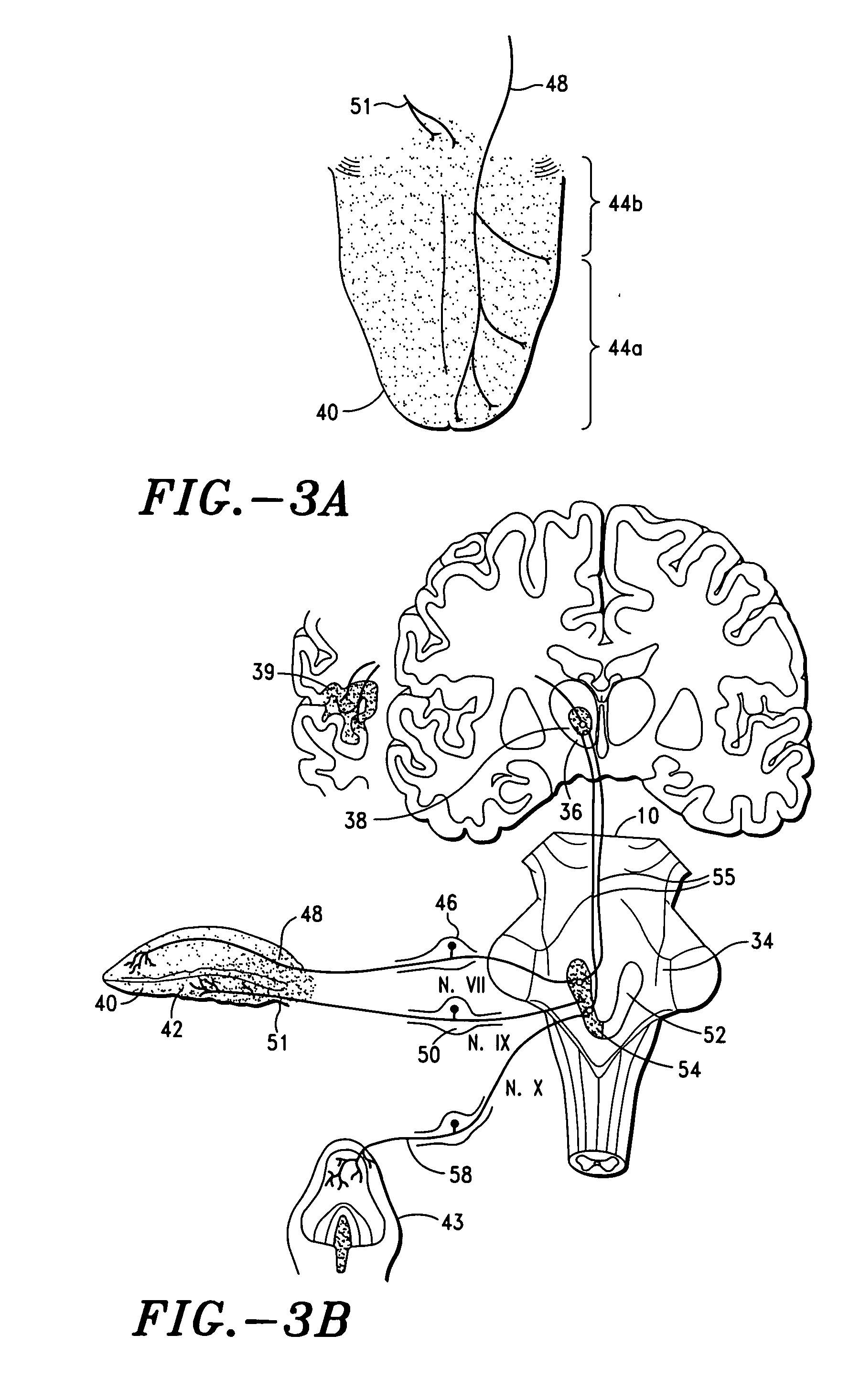Method and system for modulating eating behavior by means of neuro-electrical coded signals
a neuro-electrical coded and eating behavior technology, applied in the field of medical methods and systems for controlling emotional and instinctual behavior, can solve the problems of 6% of the total population of the united states morbidly obese, obesity is also a substantial risk factor, and limited treatment options for obese people, so as to achieve the effect of modulating eating behavior
- Summary
- Abstract
- Description
- Claims
- Application Information
AI Technical Summary
Benefits of technology
Problems solved by technology
Method used
Image
Examples
example 1
[0266] A subject is presented that has an eating disorder. The subject also has a body mass index greater than forty.
[0267] The subject is referred to a nutritionist for nutritional counseling. The subject is also placed on an exercise regime.
[0268] The subject is also prescribed taste and smell modulation via a combined taste and smell modulation system of the invention.
[0269] A first signal transmitter is attached to the subject's glossopharyngeal nerve. A second signal transmitter is attached to the subject's intermediate nerve. A third signal transmitter is attached to the subject's Olfactory tract.
[0270] A first confounding neuro-electrical signal that is adapted to modulate the subject's sense of taste, i.e., substantially abate the transfer of afferent information associated with the sense of taste to the subject's brain, is generated by the system. A second confounding neuro-electrical signal that is adapted to modulate the subject's sense of smell, i.e., substantially a...
example 2
[0272] A subject is presented that has an eating disorder, i.e. suffering from anorexia nervosa.
[0273] The subject is prescribed taste and smell modulation via a combined taste and smell modulation system of the invention. A first signal transmitter is attached to the subject's glossopharyngeal nerve. A second signal transmitter is attached to the subject's Olfactory tract.
[0274] A first simulated neuro-electrical signal that is adapted to modulate the subject's sense of taste, i.e., enhance the sense of taste, is generated by the system. A second simulated neuro-electrical signal that is adapted to modulate the subject's sense of smell, i.e., sense of smell is generated by the system.
[0275] The system is programmed to substantially simultaneously transmit the first and second simulated neuro-electrical signals to the subject via the first and second transmitters every 3 hours and upon manual activation, whereby the subject experiences a desire to eat.
[0276] As will be appreciat...
PUM
 Login to View More
Login to View More Abstract
Description
Claims
Application Information
 Login to View More
Login to View More - R&D
- Intellectual Property
- Life Sciences
- Materials
- Tech Scout
- Unparalleled Data Quality
- Higher Quality Content
- 60% Fewer Hallucinations
Browse by: Latest US Patents, China's latest patents, Technical Efficacy Thesaurus, Application Domain, Technology Topic, Popular Technical Reports.
© 2025 PatSnap. All rights reserved.Legal|Privacy policy|Modern Slavery Act Transparency Statement|Sitemap|About US| Contact US: help@patsnap.com



